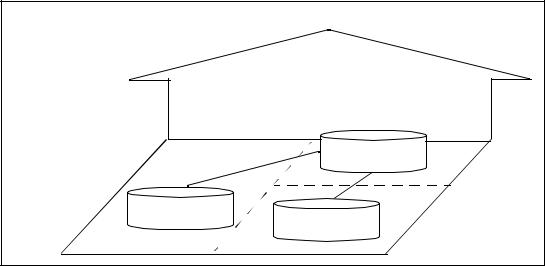
- •Part 1 : Introduction and general model
- •Version 0.6
- •Foreword
- •Introduction
- •1.1 Objective
- •1.2 Target audience
- •1.3 Interested parties and expected benefits
- •1.4 Scope
- •Figure 1.2 - Evaluation framework
- •1.5 Document organisation
- •1.6 Document conventions and terminology
- •Universal principles of evaluation
- •2.1.1 Appropriateness
- •2.1.2 Impartiality
- •2.1.3 Objectivity
- •2.1.4 Repeatability and reproducibility
- •2.1.5 Soundness of results
- •2.2 Assumptions
- •2.2.1 Cost-effectiveness
- •2.2.2 Methodology evolution
- •2.2.3 Re-usability
- •2.2.4 Terminology
- •General model
- •3.1 Responsibilities of the roles
- •3.1.1 Sponsor
- •45 The responsibilities of the sponsor include:
- •3.1.2 Developer
- •46 The responsibilities of the developer include:
- •3.1.3 Evaluator
- •47 The responsibilities of the evaluator include:
- •3.1.4 Overseer
- •48 The responsibilities of the overseer include:
- •3.1.5 Relationship of the roles
- •Developer
- •Sponsor
- •Evaluator
- •Overseer
- •Developer
- •Sponsor
- •Evaluator
- •Overseer
- •3.2 Evaluation process overview
- •3.2.1 Preparation
- •Figure 3.2 - Preparation stage
- •3.2.2 Conduct
- •Figure 3.3 - Conduct stage
- •3.2.3 Conclusion
- •Figure 3.4 - Conclusion stage
- •Annex A
- •Glossary
- •73 Deliverable:
- •74 Developer:
- •75 Element:
- •76 Evaluation:
- •77 Evaluation Assurance Level:
- •78 Evaluation Authority:
- •79 Evaluation Deliverable:
- •80 Evaluation Evidence:
- •81 Evaluation Process:
- •82 Evaluation Result:
- •83 Evaluation Summary Report:
- •84 Evaluation Technical Report:
- •85 Evaluator:
- •86 Evaluator Action Element:
- •87 Interim Verdict:
- •88 Interpretation:
- •89 Methodology:
- •90 Observation Report:
- •91 Overall Verdict:
- •92 Overseer:
- •93 Oversight Deliverable:
- •94 Oversight Verdict:
- •95 Protection Profile:
- •96 Role:
- •97 Scheme:
- •98 Security Target:
- •99 Sponsor:
- •100 Target of Evaluation:
- •101 Verdict:
- •CEM observation report (CEMOR)
- •108 Full name of the originator.
- •109 The originator’s organisation/affiliation.
- •111 Submission date of observation YY/MM/DD.
- •113 A short descriptive title for this CEMOR.
- •$1: A. N. Other
- •$5: CEMOR.ano.comment.1
- •$6: Spelling Error

CEM-97/017
D R A F T
Chapter 1
Introduction
1.1Objective
1 |
This document, the Common Evaluation Methodology (CEM), has been prepared |
|
in order to develop an agreed methodology for conducting evaluations which |
apply the Common Criteria (CC, [CCREF]). The CEM supports the mutual recognition of security evaluations1.
1.2Target audience
2 |
The CEM is aimed primarily at evaluators. However, other parties will also gain |
|
useful information from the CEM, these include developers, sponsors, overseers, |
|
and parties involved in publishing and using evaluation results. |
Editor Note : The CEMEB recognises that the term Overseer is awkward and invites suggestions for a better word.
1.3Interested parties and expected benefits
3 |
A Protection Profile (PP) developer (author) is likely to be a group of user |
|
representatives or a vendor of an Information Technology (IT) product. The PP |
|
developer will benefit from the application of the CEM in that PP evaluation will |
|
be performed consistently and that the PP will be independently validated. |
4 |
A Target of Evaluation (TOE) developer may be a vendor of an IT product, a |
|
system integrator who incorporates IT products into systems, or any other form of |
|
organisational entity which produces IT solutions. A TOE developer will benefit |
|
from the application of the CEM in that: |
a)the security characteristics documented in the PP and Security Target (ST) will have been independently validated and verified;
b)the developer’s customers will be more easily convinced that the TOE delivers the security characteristics claimed;
c)evaluated products may be used more effectively in composing secure systems;
d)the CEM contributes to cost-effective and timely evaluations.
1.Vocabulary definitions are provided in Annex A for terms presented in bold face type on first use.
97/01/11 |
Version 0.6 |
Page 1 of 24 |

1 - Introduction |
CEM-97/017 |
|||
|
|
|
|
|
|
|
D R A F T |
|
|
|
|
|
|
|
5 |
A sponsor of an evaluation is the organisational entity that commissions an |
|||
|
evaluation. A sponsor can be a developer (e.g. vendor or integrator) or consumer |
|||
|
(e.g. user, accreditor, system custodian, system security officer). The sponsor will |
|||
|
benefit from the application of the CEM in that the security characteristics of the |
|||
|
TOE will have been documented and independently validated and verified, thus |
|||
|
enabling comparison between TOEs. |
|
||
6 |
An evaluator applies the CC in conformance to the CEM. An evaluator will benefit |
|||
|
from the CEM in that it will offer specific guidance on consistent application of |
|||
|
the CC. |
|
||
7 |
An overseer is the entity that assures that the evaluation process is conducted in |
|||
|
accordance with the CC and the CEM. The overseer will benefit from the CEM as |
|||
|
it defines a consistent set of information to be provided by the evaluator. |
|||
8 |
Figure 1.1 illustrates the key parties to the security evaluation process. All parties |
|||
|
will benefit from the CEM in that it supports mutual recognition. |
|
||
Mutual Recognition |
Common Evaluation Methodology |
Evaluator |
& Overseer |
Sponsor |
Developer |
Consumer |
Figure 1.1 - Key parties to the security evaluation process
Page 2 of 24 |
Version 0.6 |
97/01/11 |
